|
||||||||||||||||||||||
![Home - Air Power Australia Website [Click for more ...]](APA/APA-Title-Main.png) |
||||||||||||||||||||||
![Sukhoi PAK-FA and Flanker Index Page [Click for more ...]](APA/flanker.png) |
![F-35 Joint Strike Fighter Index Page [Click for more ...]](APA/jsf.png) |
![Weapons Technology Index Page [Click for more ...]](APA/weps.png) |
![News and Media Related Material Index Page [Click for more ...]](APA/media.png) |
|||||||||||||||||||
![Surface to Air Missile Systems / Integrated Air Defence Systems Index Page [Click for more ...]](APA/sams-iads.png) |
![Ballistic Missiles and Missile Defence Page [Click for more ...]](APA/msls-bmd.png) |
![Air Power and National Military Strategy Index Page [Click for more ...]](APA/strategy.png) |
![Military Aviation Historical Topics Index Page [Click for more ...]](APA/history.png)
|
![Intelligence, Surveillance and Reconnaissance and Network Centric Warfare Index Page [Click for more ...]](APA/isr-ncw.png) |
![Information Warfare / Operations and Electronic Warfare Index Page [Click for more ...]](APA/iw.png) |
![Systems and Basic Technology Index Page [Click for more ...]](APA/technology.png) |
![Related Links Index Page [Click for more ...]](APA/links.png) |
|||||||||||||||
![Homepage of Australia's First Online Journal Covering Air Power Issues (ISSN 1832-2433) [Click for more ...]](APA/apa-analyses.png) |
||||||||||||||||||||||
| Last Updated: Mon Jan 27 11:18:09 UTC 2014 | ||||||||||||||||||||||
|
||||||||||||||||||||||
|
||||||||||||||||||||||
![Home - Air Power Australia Website [Click for more ...]](APA/APA-Title-Main.png) |
||||||||||||||||||||||
![Sukhoi PAK-FA and Flanker Index Page [Click for more ...]](APA/flanker.png) |
![F-35 Joint Strike Fighter Index Page [Click for more ...]](APA/jsf.png) |
![Weapons Technology Index Page [Click for more ...]](APA/weps.png) |
![News and Media Related Material Index Page [Click for more ...]](APA/media.png) |
|||||||||||||||||||
![Surface to Air Missile Systems / Integrated Air Defence Systems Index Page [Click for more ...]](APA/sams-iads.png) |
![Ballistic Missiles and Missile Defence Page [Click for more ...]](APA/msls-bmd.png) |
![Air Power and National Military Strategy Index Page [Click for more ...]](APA/strategy.png) |
![Military Aviation Historical Topics Index Page [Click for more ...]](APA/history.png)
|
![Intelligence, Surveillance and Reconnaissance and Network Centric Warfare Index Page [Click for more ...]](APA/isr-ncw.png) |
![Information Warfare / Operations and Electronic Warfare Index Page [Click for more ...]](APA/iw.png) |
![Systems and Basic Technology Index Page [Click for more ...]](APA/technology.png) |
![Related Links Index Page [Click for more ...]](APA/links.png) |
|||||||||||||||
![Homepage of Australia's First Online Journal Covering Air Power Issues (ISSN 1832-2433) [Click for more ...]](APA/apa-analyses.png) |
||||||||||||||||||||||
| Last Updated: Mon Jan 27 11:18:09 UTC 2014 | ||||||||||||||||||||||
|
||||||||||||||||||||||
| Operations Hardtack and Fishbowl High-altitude Electro Magnetic Pulse Primer High Altitude Nuclear Test Multimedia and Imagery |
Photographic
Essay APA-PE-2012-0102 Compiled by Dr Carlo Kopp Text © 2012 Carlo Kopp Photographic images USG Public Domain |
| During the late 1950s and early
1960s the United States conducted a series of high altitude nuclear
tests to assess weapons effects in the upper atmosphere and near space.
These experiments were the first to display nuclear High-altitude
ElectroMagnetic Pulse (HEMP) effects. These tests were conducted as part of the 1958 Hardtack I series of tests, and the 1962 Fishbowl series of tests. Weapon yields varied from sub-Megaton up to 3.8 Megatons, with altitudes from 20 km up to 400 km. |
|
High-altitude
Electro Magnetic Pulse
|
| There are three characteristic
components to any HEMP event, these are labelled by the IEC as E1, E2
and E3 components in the IEC 61000-2-9 through -13 Basic
Electromagnetic Compatibility (EMC) documents. The initial E1 component is a fast and short high field strength pulse arising as a result of gamma photons from the weapon ionising gas molecules in the uppermost layers of the atmosphere. The highly energetic relativistic ~1 - 2 MeV electrons interact with the earth's magnetic field, and produce an electric field. The E1 pulse duration is ~ 1 μsec, and yields ground level field strengths of up to 50 kiloVolts/metre for conventional boosted fission or fusion warheads. The following E2 component is produced by the neutron flux generated by the warhead, and has a duration of up to a second. It is often compared in behaviour to a lightning induced electric field transient. While the E2 HEMP component is less damaging than the E1 component and in itself might be stopped by extant lightning protection mechanisms, wounding of protective hardware by the E1 component may permit the E2 component to do significant damage. The final E3 component may have a duration of up to hundreds of seconds, and is often described in older literature as the MHD-EMP (Magneto-Hydro Dynamic EMP) effect. This slow pulse is a result of the earth's magnetic field recovering from the perturbation produced by the nuclear weapon effect. It is similar but more intensive than solar weather generated Geomagnetically Induced Current (GIC) effects, well known for damaging power grids and consumer equipment. The E3 component can often penetrate soils and reach buried cables, and if the cable is long enough, the induced voltages may destroy connected electrical devices. The magnitude of the E3 effect is mitigated by highly electrically conductive soils, and exacerbated by dry or otherwise highly resistive soils. 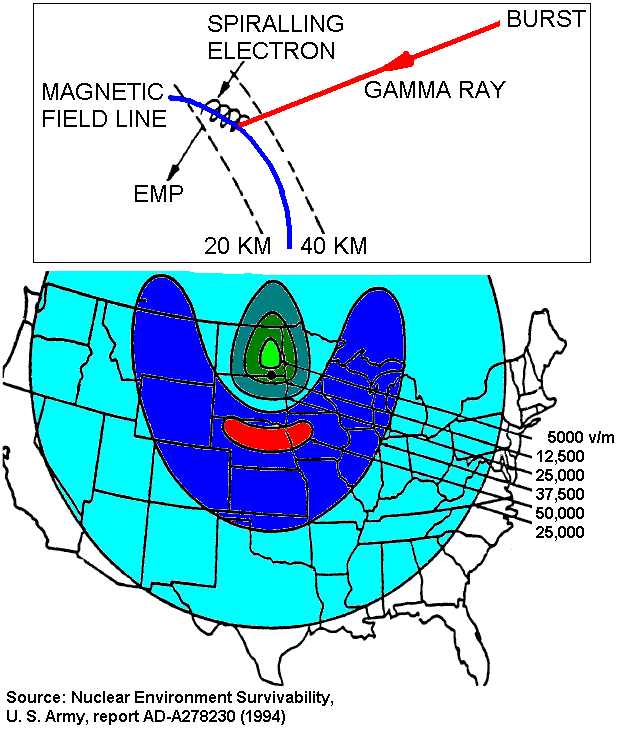 |
|
High Altitude Nuclear Test Multimedia Materials |
| |
|
Hardtack I / Teak 3.8 MT @ 252 kft August 1958 |
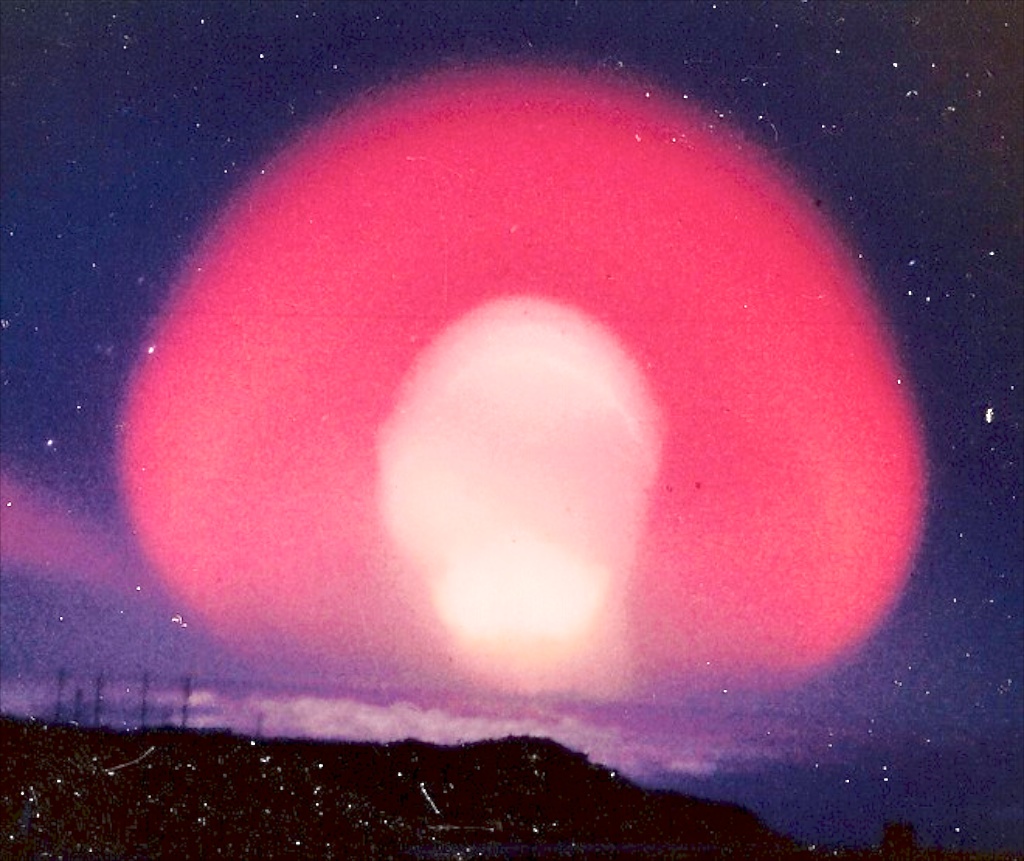 Teak was intended as an
exoatmospheric ABM test using a high yield warhead, and produced the
first recorded HEMP effects.
|
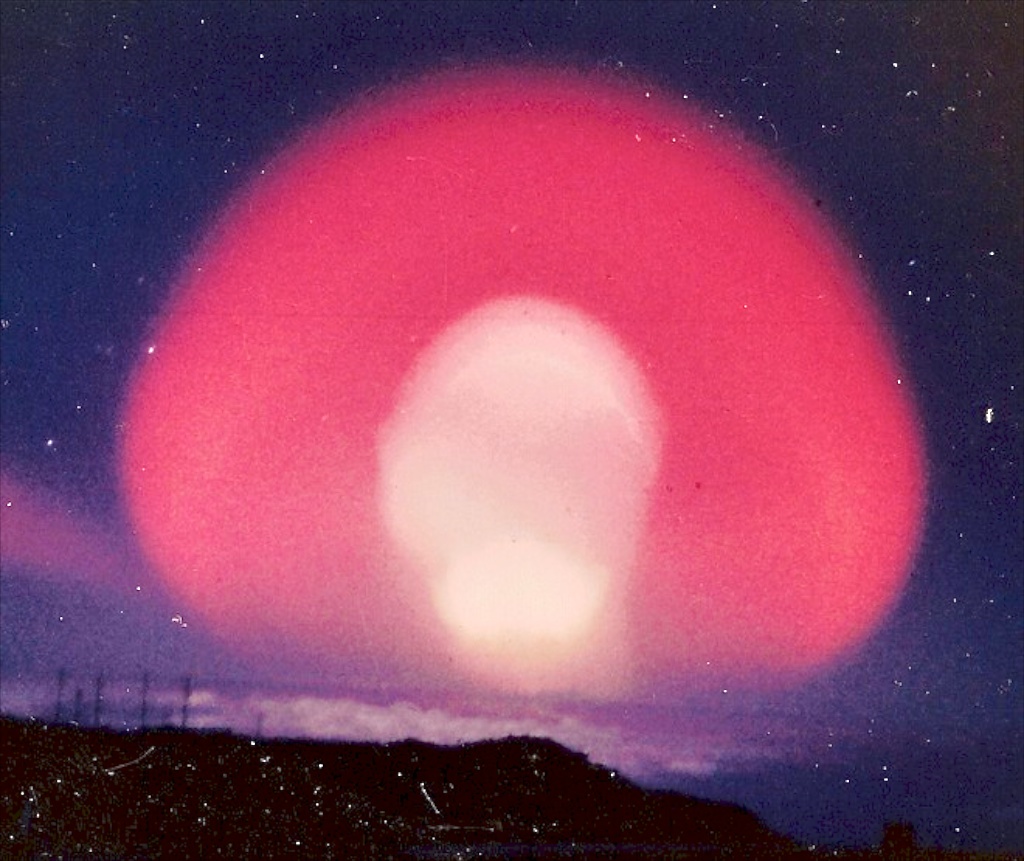 |
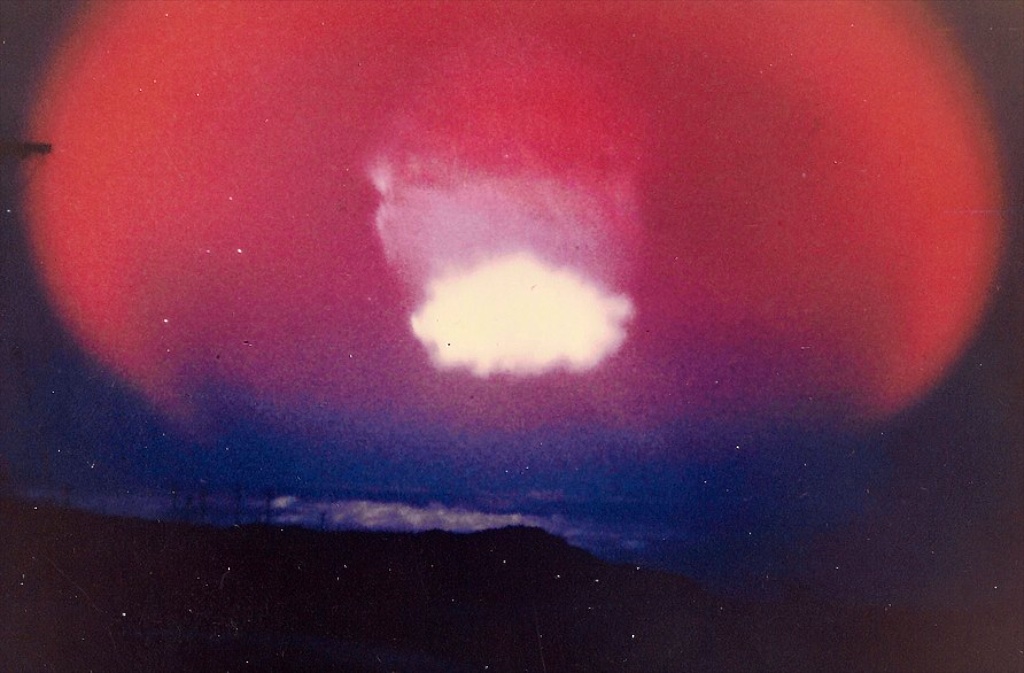 |
|
Hardtack I / Orange 3.8 MT @ 141 kft August 1958 |
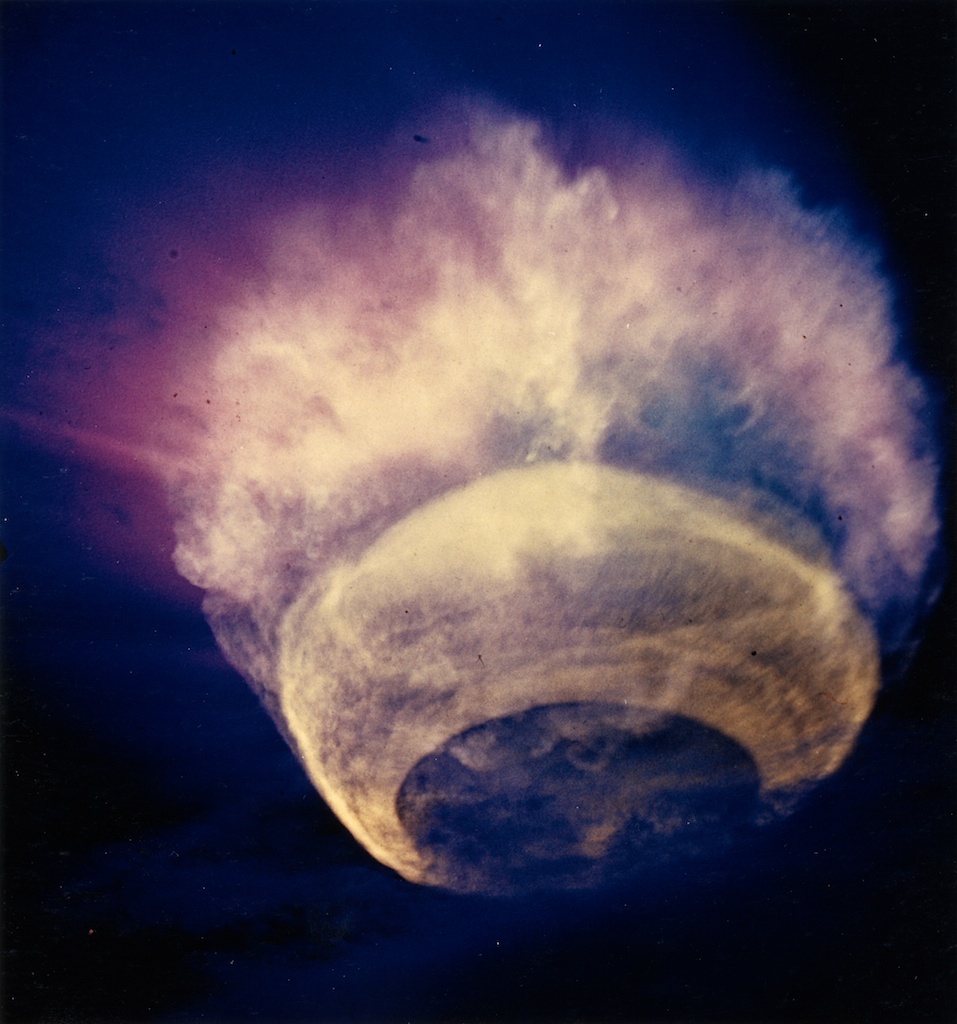 Orange was intended as an exoatmospheric ABM test using a high yield warhead. |
|
Fishbowl / Starfish Prime 0.25 MT @ 400 km July 1962 |
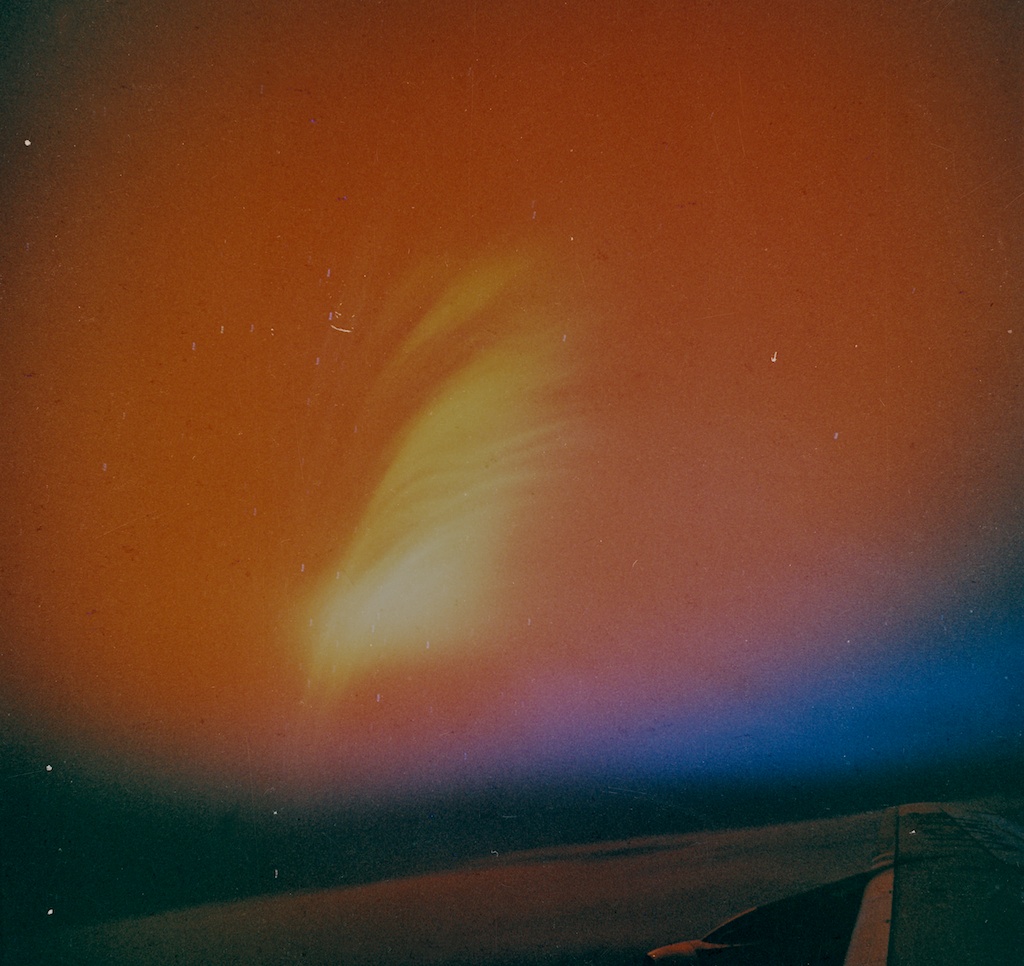 Viewed from a B-47 observation aircraft. |
 |
Maui station from 0 to 15 seconds. |
 Maui station from 45 to 90 seconds.
|
|
Fishbowl / Bluegill Triple Prime Sub-MT @ 48 km October 1962 |
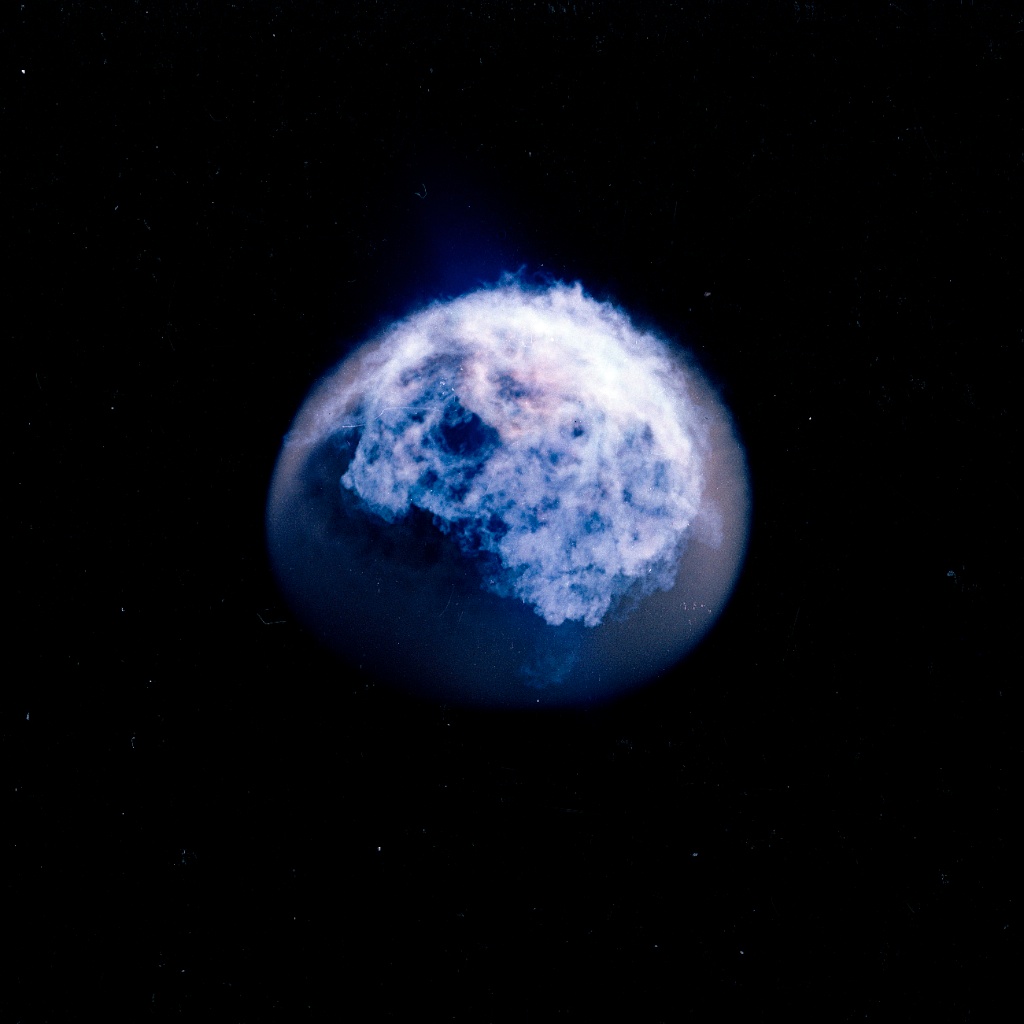 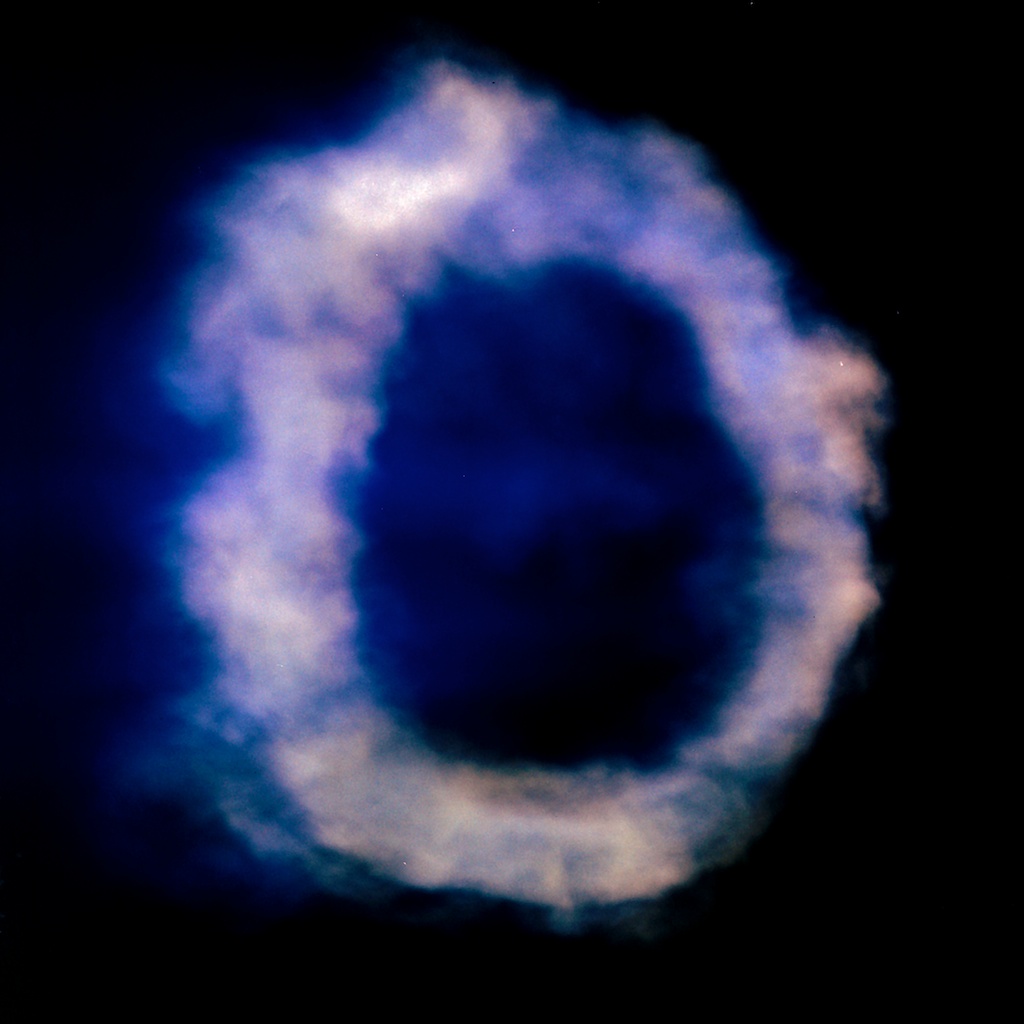 |
|
Fishbowl / Kingfish Sub-MT @ 97 km November 1962 |
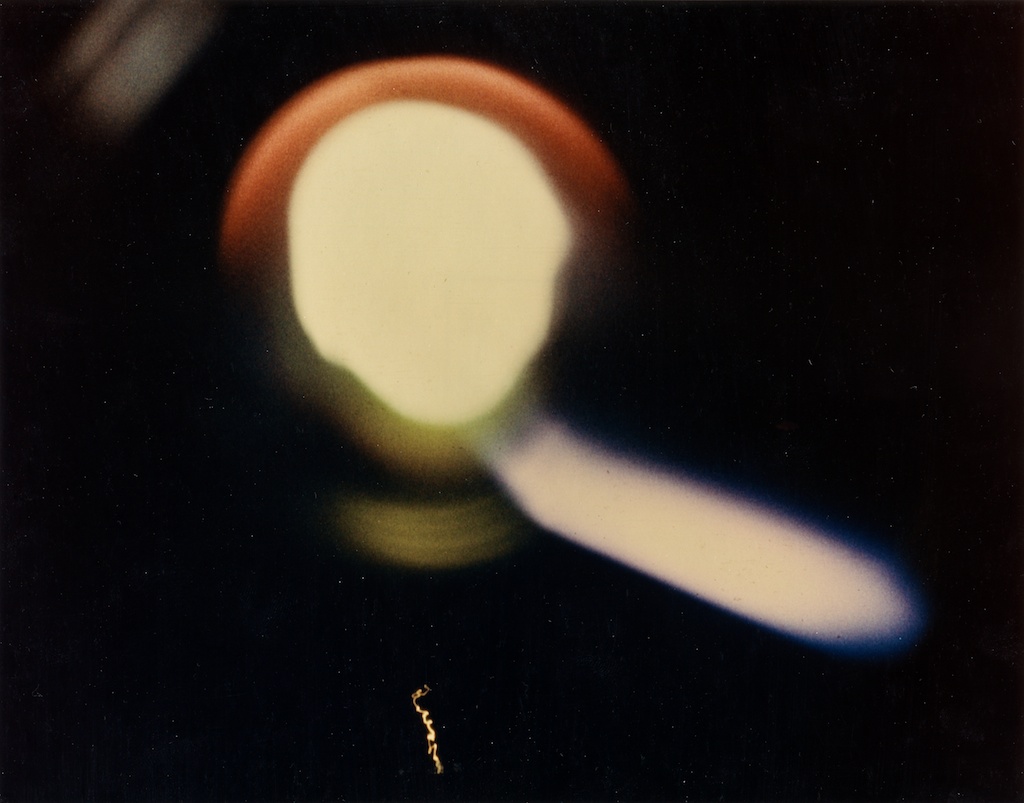 |
 |
|
Photographic Essay APA-PE-2012-0102 |
|
|
|
|||||||||||||
![Sukhoi PAK-FA and Flanker Index Page [Click for more ...]](APA/flanker.png) |
![F-35 Joint Strike Fighter Index Page [Click for more ...]](APA/jsf.png) |
![Weapons Technology Index Page [Click for more ...]](APA/weps.png) |
![News and Media Related Material Index Page [Click for more ...]](APA/media.png) |
||||||||||
![Surface to Air Missile Systems / Integrated Air Defence Systems Index Page [Click for more ...]](APA/sams-iads.png) |
![Ballistic Missiles and Missile Defence Page [Click for more ...]](APA/msls-bmd.png) |
![Air Power and National Military Strategy Index Page [Click for more ...]](APA/strategy.png) |
![Military Aviation Historical Topics Index Page [Click for more ...]](APA/history.png)
|
![Information Warfare / Operations and Electronic Warfare Index Page [Click for more ...]](APA/iw.png) |
![Systems and Basic Technology Index Page [Click for more ...]](APA/technology.png) |
![Related Links Index Page [Click for more ...]](APA/links.png) |
|||||||
![Homepage of Australia's First Online Journal Covering Air Power Issues (ISSN 1832-2433) [Click for more ...]](APA/apa-analyses.png) |
|||||||||||||
| Artwork, graphic design, layout and text © 2004 - 2014 Carlo Kopp; Text © 2004 - 2014 Peter Goon; All rights reserved. Recommended browsers. Contact webmaster. Site navigation hints. Current hot topics. | |||||||||||||
|
Site Update
Status:
$Revision: 1.753 $
Site History: Notices
and
Updates / NLA Pandora Archive
|
|||||||||||||
|
|
Tweet | Follow @APA_Updates | |||||||||||
|
|
|||||||||||||
|
|
|||||||||||||